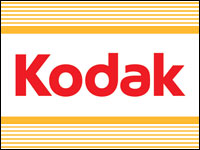What a difference a year makes. Twelve months ago, I never would have predicted that Internet usage would become completely mainstream by November 1999.
Internet time, which is roughly judged to move at four times the normal rate of business progress, has rushed us to a place where the average Internet user looks almost exactly the same as the average television viewer.
Over the past few years, most analysts predicted that mainstream Internet usage would occur when broadband access became ubiquitous in American homes. The belief was that entertainment production would have to meet the quality and ease-of-use that we get from television.
Well, guess what? Mainstream America wanted to know what all the fuss was about and jumped online, even with a 56K modem.
New Demographics Prove The Case
A cyber-study released yesterday by America Online and Roper Starch confirms the demographics.
In the recent past, the average Internet user was a young professional man with an above-average income.
Not anymore.
Over the past year, 54 percent of new users were women. The education level of the user is on par with the general population, as is the income level of today’s user. Older Americans are logging on as well.
A Long Way From Dialog
I have spent most of my working life at the center, or at least the periphery, of the online industry. In the early 80s, I worked for a service company that prepared media companies to launch on Lockheed’s Dialog online service.
That was a world of special librarians going online with Boolean searches for university and corporate researchers. Most professionals in the industry never anticipated that online access would become easy enough for an end user to access the system without the help of a library intermediary.
There were a few dreamy media companies like Knight Ridder that intermittently spent millions of dollars (US$) trying to launch consumer access to news such as the disastrous VuText experiment in Florida. These moves produced one failure after another.
There was a rule back then: Consumer acceptance of online access would not come until it could be delivered to the television at a speed resembling the changing of a channel from ABC to CNN.
Mainstream America Didn’t Wait for Broadband
Sprint is running a television ad that shows a salesman luring cyber-geeks out into the open with wireless Internet. I feel like one of those pale, droopy-dazed nerds as I look around and see that the whole world has become cyber-savvy in the last 12 swirling months.
When did it all happen? It seems as if 80 percent of television commercials plug online services, as well as 80 percent of magazine ads. Billboards, buses, radio spots — every ad screams Internet. It all seems to have changed in the past three weeks.
Good For Kids
For young kids, use of the Internet is not about isolation. There is a common perception of alienated teenagers getting more and more wigged out with each hour spent traveling the dank and dark depths of cyberspace. Yet I watch my 11 year-old talk excitedly with his friends about game sites, and I see that the Internet is anything but isolating to kids.
The survey shows that kids aged nine to 17 find that the Internet increases interest in current events (44%), improves the quality of friendships (39%), helps with writing and language skills (36%), and improves school performance (33%). These figures could have a positive effect on all our lives.
Still, I must say, it is hard to get used to everyone understanding what I mean when I say “online” or “Web.” Awareness of the Internet used to be like having secret knowledge of a movement that would one day take over the world.
Somehow, the world was taken over when I blinked.
























































Social Media
See all Social Media